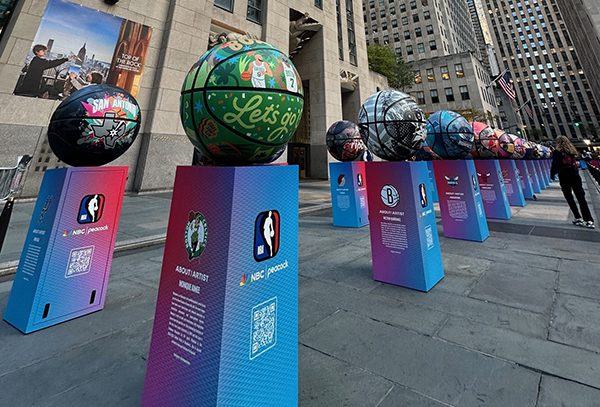Consumers expect highly-personalized experiences when interacting with brands today—particularly if they’ve volunteered their time, money and personal information in exchange for them. But it’s what you do with that data that counts.
For first-party data-rich companies like DoorDash and e.l.f. Beauty, the key to leveraging consumer data to create exceptional brand experiences—while also adhering to privacy stipulations—is honoring that “implicit value exchange,” according to DoorDash CMO Kofi Amoo-Gottfried, who spoke on a panel at the POSSIBLE marketing conference in Miami last month.
The two companies have mined scores of data sets to fuel innovative marketing programs as creative solutions for their customers. For instance, the data insights team at DoorDash noticed that some consumers were ordering twice on the platform from different stores within a short period of time. So to solve the problem—and ultimately enhance the user experience—the brand created a new service called DoubleDash, which allows users to purchase items from nearby stores without the added service or delivery fee that incurs from multiple orders.
The advantage of having access to a trove of first-party data is that it’s actionable, which inspires marketers and their cross-functional teams to make decisions as close to real-time as possible. “We have something like 25 million monthly active users on our platform, so we have an enormous amount of first-party data,” Amoo-Gottfried said. “It’s coming right from the platform; it’s coming from behaviors.”
Another data point DoorDash is monitoring is communications to drivers, whom they refer to as “Dashers,” in real-time. “If a Dasher goes to a store and a store’s closed, we actually get a note,” Amoo-Gottfried explained. “But then how do we get the feedback from the Dasher that the store is closed? And in real-time, and take that store down and say, ‘this store’s closed, here are some other options that you have.’ We’re constantly learning as we go, from everything [in the app].”
First-Party Data Magic
Similarly, e.l.f. Beauty draws insights from its passionate community of loyalty members. “That’s where the first-party data magic really comes into play,” according to Ekta Chopra, the brand’s Chief Digital Officer, who spoke on the conference panel alongside the DoorDash CMO. “Our app has 1.2 million downloads, and 95 percent of our loyalty members love to shop in the app. So we learn how they like to shop, and which channel… As a brand that is in every single retailer, we don’t care where the consumer shops. But we do want to have that relationship with the consumer. The first-party data really allows us to do that.”
Honoring that relationship by providing an enhanced experience while adhering to data privacy regulations is critical, however. “The most fundamental thing is the implicit value exchange,” Amoo-Gottfried said. “How do we help use this data to actually create a better experience, and how do we ensure there are a ton of guardrails?” That translates to actively deciding not to use certain subsets of data if they don’t serve that purpose, he said. “There’s entire categories of things that we won’t target on, even though we might be aware of what they are, because we think it’s problematic to target on that identity factor… Get the things that you actually need and don’t touch the other stuff. We try to figure out which pieces are most predictive.”
Chopra agreed that the relationship between brand and consumer starts with trust, and that’s something she takes very seriously. “As marketing leaders, you have to pay attention to that, because one data leak is something that will really hurt your reputation, and especially as a public company, it becomes a bigger responsibility.”
Data Privacy Hacks
For marketers who are laser-focused on data privacy and compliance, Chopra has a few tips. First, she recommends working with your legal team to ensure there are data privacy considerations when crafting your data processing agreements (DPAs) with vendors. “Depending on how big you are and what kind of data you’re storing, it can get really complex,” she said. “So having that strong partnership with your legal team is important.”
Second, your cyber security policy should include a data privacy component to it and be right-sized appropriately—depending on the size of your customer base—so that you have adequate insurance in case any data leaks occur.
Third, consider the sensitivity of the data consumers are sharing with you and practice good data hygiene accordingly. “They’re giving you certain information that’s really private in some cases, depending on if you’re in the medical field—and beauty there’s some elements, too,” Chopra said. “You should know where that data is transferring in your ecosystem, whether it’s this system or that system. There are tools, of course, that can do that. But from a good data hygiene perspective, understanding that is super important.”
While companies seek to mine more and more consumer data, great responsibility comes with that exercise. “As you become bigger, of course you want more data… but you should also know that it adds a layer of complexity with private information,” Chopra said. Moreover, at a certain point you may be asked to delete it—and you need to be ready for that and have the tools in place to prove it, she said. “So when people do come in and do an audit, you can show it to them.”





